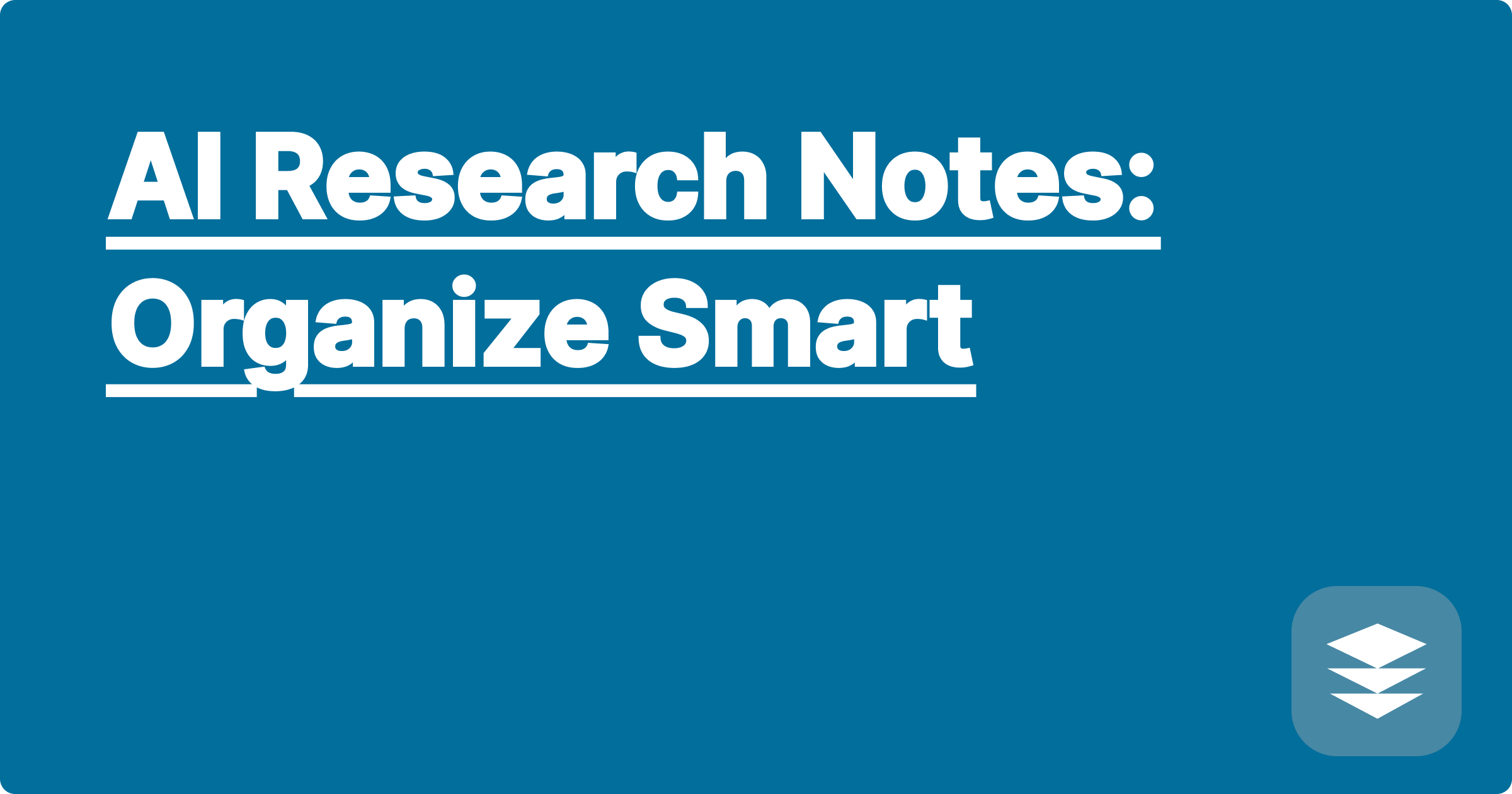
The sheer volume of data in STEM fields can be overwhelming. Research papers, experimental results, code repositories, and lecture notes pile up, making it difficult to stay organized and efficiently retrieve the right information when needed. This information overload can significantly hinder research progress, leading to wasted time and decreased productivity. Imagine spending hours searching for a specific equation or a crucial piece of data buried within a mountain of files – a common frustration for many STEM students and researchers. This is where the power of AI comes in. Artificial intelligence offers innovative solutions to manage and organize research notes, transforming the way we interact with information and ultimately boosting productivity.
This blog post explores how AI-powered tools can revolutionize research note-taking and data management for STEM students and researchers. We'll delve into practical strategies for leveraging these tools to streamline your workflow, save valuable time, and enhance the quality of your research. Specifically, we'll focus on using AI for data analysis and visualization, offering concrete examples and step-by-step guidance on how to integrate these tools into your research process. We'll also introduce the concept of a General Purpose AI Partner (GPAI), a virtual assistant that can become your personalized research companion.
STEM fields are characterized by complex data sets, intricate formulas, and extensive literature reviews. Managing this information effectively is crucial for conducting successful research. Traditional methods of note-taking, often involving handwritten notes or basic word processing documents, can quickly become unwieldy and inefficient when dealing with the volume of data generated in modern STEM research. Searching through these disorganized notes for specific information can be time-consuming and frustrating, hindering the research process. Furthermore, traditional methods often lack the ability to seamlessly integrate data from various sources, making it difficult to draw connections and identify patterns. This challenge is further compounded by the ever-increasing pace of scientific discovery, which necessitates efficient information management to stay at the forefront of your field.
AI-powered tools offer a transformative approach to research note management. Tools like ChatGPT, Claude, and Wolfram Alpha can be integrated into your workflow to streamline data organization, analysis, and retrieval. These tools can help you synthesize information from multiple sources, generate summaries of research papers, and even assist in writing code. Imagine having an AI assistant that can instantly retrieve a specific equation from your notes, generate a graph from your experimental data, or summarize the key findings of a dense research paper. This is the power of AI in research. By leveraging these tools, you can free up valuable time and mental energy to focus on the core aspects of your research, ultimately leading to increased productivity and higher quality work.
Let's walk through an example of how to use a GPAI for data analysis. First, gather your research data, which could be anything from experimental results to survey responses. Next, input this data into your GPAI. Many GPAIs offer seamless integration with common data formats like CSV and Excel. Once the data is uploaded, you can instruct your GPAI to perform various analyses. For example, you could ask it to calculate descriptive statistics, identify correlations between variables, or perform regression analysis. The GPAI will process the data and present the results in a clear and concise manner, often including visualizations like graphs and charts. You can then further refine your analysis by asking the GPAI to explore specific trends or patterns in the data. This interactive process allows for a deeper understanding of the data and facilitates the discovery of meaningful insights.
Consider a physics student studying the trajectory of a projectile. They can input their experimental data, including the launch angle, initial velocity, and time of flight, into their GPAI. The GPAI can then calculate the projectile's range, maximum height, and trajectory equation, even visualizing the trajectory in a 3D plot. A chemistry student analyzing the results of a titration experiment can use their GPAI to calculate the concentration of an unknown solution, determine the equivalence point, and generate a titration curve. In biology, a student researching gene expression can leverage their GPAI to analyze microarray data, identify differentially expressed genes, and visualize gene networks. These are just a few examples of the diverse applications of AI in STEM research.
To maximize the benefits of AI in your research, develop a systematic approach to note-taking and data management. Use consistent tags and keywords to organize your notes, making it easier for your GPAI to retrieve specific information. Experiment with different AI tools to find the ones that best suit your research needs. Don't be afraid to explore the advanced features of these tools, such as natural language processing and machine learning algorithms. Remember that AI is a tool to enhance your research, not replace it. Critically evaluate the output of AI tools and always validate the results with your own understanding and expertise. Sharing your experiences and best practices with your peers can create a collaborative learning environment where everyone benefits from the power of AI.
In conclusion, AI-powered tools offer a powerful solution to the challenges of information overload in STEM research. By embracing these tools and developing effective strategies for their implementation, you can significantly enhance your research productivity, gain deeper insights from your data, and ultimately achieve greater success in your academic pursuits. Start exploring the world of AI-powered research tools today and unlock the full potential of your research endeavors. The future of STEM research is intelligent and organized, and it's within your reach.
AI Math Solver: Get Unstuck Now!
AI Research Notes: Organize Smart
AI for CAD: Design Smarter, Faster
AI Physics Solver: Get Unstuck Now!
AI Lab Assistant: Data Analysis Made Easy
AI Math Tutor: Conquer Complex Problems
AI for Simulations: Optimize Experiments
AI Chemistry Solver: Ace Your Homework